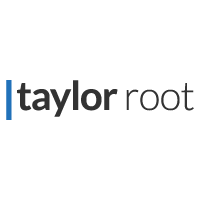
Group Chief Legal, Regulatory & Governance Officer | Ooredoo Group









Hilal Mohammed Al Khulaifi
Group Chief Legal, Regulatory & Governance Officer | Ooredoo Group
How do you approach managing legal aspects during periods of instability or crises, and how does your legal strategy align with the broader business strategy to ensure the organisation’s resilience?
I would adopt a strategic and adaptable approach to ensure that legal risks are mitigated while aligning with the broader business strategy. This would involve conducting a thorough assessment to identify potential legal risks related to the crisis, including understanding regulatory changes, contract breaches, compliance issues, and litigation risks. It is essential to closely align with the organisation’s strategic goals and priorities during the crisis, while maintaining open communication channels with key stakeholders, such as executives, board members, and relevant departments.
Contracts would need to be reviewed and amended to address the current instability, including provisions such as force majeure clauses and renegotiation terms where necessary. A crisis management plan would be developed and implemented, incorporating legal response strategies that cover potential litigation, regulatory investigations, and other legal issues. It would be crucial to continuously monitor the legal environment and adjust strategies accordingly, staying informed about legislative changes, case law developments, and industry trends.
In addition, implementing legal technology solutions would improve risk management and compliance monitoring. The strategies developed would not only address immediate legal issues but also aim to strengthen the organisation’s resilience for future crises. This may involve revising risk management practices and legal frameworks to better withstand future challenges.
What are the main cases or transactions that you have been involved in recently?
Recently, we have made significant progress across several high-impact transactions and initiatives. Notably, we entered into an agreement to establish the largest tower company in the MENA region, valued at USD 2.2 billion. This venture combines the markets of Qatar, Kuwait, Jordan, Iraq, Algeria, and Tunisia, and is projected to achieve an annual run-rate revenue of USD 500 million. In addition, we are making strong headway with the carve-out of our data centres to create a new carrier-neutral platform, having successfully transferred operations from Qatar and Tunisia into a specialised, independent entity, with further carve-outs expected to be completed soon. The new data centre company is set to expand its capacity to over 100 megawatts, with a planned investment of USD 1 billion over the medium to long term, reflecting substantial momentum. Furthermore, in the fintech sector, we have completed the legal carve-out of our fintech business in Qatar. We are also pleased to announce that we received the Payment Service Provider (PSP) licence in Oman on 28 April 2024, marking another significant milestone in our expansion efforts.
How do you measure the impact of ESG initiatives on the company’s overall performance and reputation?
Measuring the impact of ESG (Environmental, Social, and Governance) initiatives on Ooredoo’s overall performance and reputation requires a combination of quantitative and qualitative metrics. These efforts have primarily focused on financial metrics, reputation, operational metrics, regulatory and compliance metrics, and benchmarking.
In terms of financial metrics, the impact of ESG initiatives can be seen through cost savings and efficiency gains, such as reductions in operational costs from lower energy usage or waste disposal expenses. Revenue growth is measured from products or services linked to ESG efforts, such as green products or ethical investments. Additionally, changes in stock prices, investment inflows, or access to capital are monitored to gauge investor interest due to ESG performance. Another key aspect is risk mitigation, where the financial benefits of avoiding regulatory fines, legal costs, or other risk-related expenses thanks to proactive ESG measures are assessed.
Reputation is measured through changes in brand value or equity, which are analysed using brand valuation reports or marketing research. Media coverage is also tracked to assess the tone and volume of ESG-related reporting, with positive coverage enhancing reputation and negative coverage having the potential to harm it.
Operational metrics focus on efficiency improvements, such as reduced energy consumption, lower waste production, or better supply chain practices. The outcomes of ESG-driven innovations are also measured, including their effects on product development, market share, and competitive positioning.
From a regulatory and compliance perspective, the costs associated with meeting regulatory requirements are monitored and compared to those incurred before implementing ESG initiatives. Any regulatory benefits, such as tax incentives or grants, are also assessed as a result of these efforts.
Benchmarking involves comparing ESG performance with industry peers to understand relative performance and identify areas for improvement. ESG ratings and rankings from organisations like MSCI, Sustainalytics, or Bloomberg are used to evaluate how well the company is performing compared to others in the industry.
To achieve these goals, key performance indicators (KPIs) are developed, tailored to ESG objectives such as carbon footprint reduction, diversity and inclusion metrics, or board governance practices. Data analytics tools are also employed to analyse trends, patterns, and correlations related to ESG initiatives and their overall impact.
Looking ahead, major legal challenges for businesses in the region over the next five years may include adapting to evolving regulatory environments, managing risks related to data privacy and security, and addressing increasing demands for transparency and accountability in ESG reporting. Preparations to address these challenges involve staying informed of regulatory developments, strengthening risk management frameworks, and ensuring robust legal compliance across all areas of operation.
What do you see as the major legal challenges for businesses in the region over the next five years, and how are you preparing to address them?
In the next five years, businesses in Qatar are likely to face several significant legal challenges, often reflecting broader economic, political, and technological trends. One of the key areas is regulatory compliance and the challenge posed by constantly changing laws. Governments worldwide are continuously updating regulations, particularly around data privacy, environmental sustainability, and corporate governance. To address this, investing in robust compliance programmes, staying updated with legal changes through regular training and consultations with legal experts, and implementing flexible systems that can adapt to new regulations will be essential.
Another major challenge will be cybersecurity and data protection. As digital transformation accelerates, Ooredoo, like many other companies, becomes more vulnerable to cyberattacks and data breaches. Compliance with data protection laws and managing the potential fallout from security incidents will be critical. Strengthening cybersecurity measures, regularly updating IT infrastructure, and developing comprehensive data protection policies will be key to overcoming these challenges.
Intellectual property (IP) issues are also likely to pose challenges, particularly with the rapid pace of innovation. Protecting Ooredoo’s intellectual property rights, and navigating the complexities of patents, trademarks, and copyrights, will require focused efforts. Ensuring that IP assets are well-protected through the registration of patents, trademarks, and copyrights where applicable is essential.
Employment law and workforce management is another area of concern. Changes in employment laws, including those relating to remote work, employee rights, and economic regulations, could significantly impact how businesses manage their workforce. To navigate this, it is crucial to stay informed about changes in employment laws, ensure that HR policies are up to date, and consider flexible work arrangements. Investing in training for management on labour laws and employee rights will also be necessary to effectively manage the workforce in a changing legal landscape.